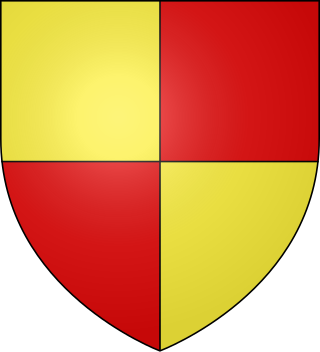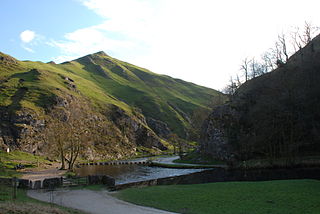Related Research Articles

The Chief Baron of the Irish Exchequer was the Baron (judge) who presided over the Irish Court of Exchequer. This was a mirror of the equivalent court in England, and was one of the four courts which sat in the building in Dublin which is still called The Four Courts.
Nicholas St Lawrence, 4th Baron Howth was a leading Irish nobleman, soldier and statesman of the early Tudor period, who held the office of Lord Chancellor of Ireland.

Sir Richard FitzEustace (c.1380–1445) was an Irish statesman who twice held the office of Lord Chancellor of Ireland.
Sir Robert FitzEustace (c.1420–1486) was an Irish landowner and politician of the fifteenth century.

The Court of Common Pleas was one of the principal courts of common law in Ireland. It was a mirror image of the equivalent court in England. Common Pleas was one of the four courts of justice which gave the Four Courts in Dublin, which is still in use as a courthouse, its name. Its remit as in England was to hear lawsuits between ordinary citizens.

The Court of Exchequer (Ireland), or the Irish Exchequer of Pleas, was one of the senior courts of common law in Ireland. It was the mirror image of the equivalent court in England. The Court of Exchequer was one of the four royal courts of justice which gave their name to the building in Dublin in which they were located, which is still called the Four Courts, and is in use as a courthouse.
Christopher Bernevall, or Barnewall (1370–1446) was an Irish politician and judge of the fifteenth century, who held the offices of Vice-Treasurer of Ireland and Lord Chief Justice of Ireland. He was deeply involved in the political controversies of his time, and was a leading opponent of the powerful Anglo-Irish magnate James Butler, 4th Earl of Ormond. His elder son Nicholas also held office as Lord Chief Justice, and his younger son Robert was created the first Baron Trimleston.
Christopher St Lawrence, 2nd Baron Howth was an Anglo-Irish nobleman. He was a key figure in fifteenth-century Irish politics, and one of the strongest supporters in Ireland of the House of York, who seized the English Crown in 1461. His tomb can still be seen in the family chapel in St. Mary's Church, Howth.
Robert le Poer was an Irish judge and Crown official who held the offices of Lord High Treasurer of Ireland and Chief Baron of the Irish Exchequer.
William de Karlell was an English-born judge, administrator and cleric in fourteenth-century Ireland. He held numerous benefices including Archdeacon of Meath and Rector of Youghal, and sat in the Irish House of Commons. After sitting for some years as a Baron of the Court of Exchequer (Ireland) he was removed from office, following a flood of complaints about his acts of extortion and oppression committed by himself and Chief Baron Holywood, but he was later restored to favour, and served briefly as Chief Baron of the Irish Exchequer. He is buried in St Canice's Cathedral, Kilkenny.
Henry Mitchell (c.1320–1384) was an Irish judge of the fourteenth century. He was one of the first recorded holders of the office of Attorney General for Ireland, and was subsequently Chief Baron of the Irish Exchequer and Chief Justice of the Irish Common Pleas.
The Burnell family were a Dublin family who were prominent in Irish public life and in the arts from the thirteenth to the seventeenth century. They acquired substantial estates in County Dublin, and married into the Anglo-Irish aristocracy. They produced several judges and politicians, a leading playwright, and one of the first female Irish poets. They were staunch Roman Catholics, who opposed the Penal Laws, and supported the Irish Confederacy in the 1640s. They forfeited most of their lands after the failure of the Confederate cause, and never recovered them.
Sir John de Shriggeley, whose family name is also spelt Shirggeley and Shryggeley was an Irish statesman and judge who held several important judicial offices, including Chief Justice of the Irish Common Pleas. Although he committed two murders, he was a valued servant of the English Crown.
John Tirel, or Tyrell was a prominent judge and statesman in fourteenth-century Ireland who held office as Serjeant-at-law and Chief Justice of the Irish Common Pleas.

Thomas Dowdall, also spelt Dowdale, Douedall, or Dowedall, was an Irish barrister and judge who held the office of Master of the Rolls in Ireland.

Thomas Bache was an Anglo-Italian cleric and judge who held high office in Ireland in the later fourteenth and early fifteenth centuries. He served one term as Lord High Treasurer of Ireland and three terms as Chief Baron of the Irish Exchequer.
John Fitzadam was an Irish judge of the late fourteenth and early fifteenth century. He is notable for his very long tenure as Chief Justice of the Irish Common Pleas; he held the office for twenty-three years, in the reigns of three English Kings. Some years after his death, he was accused of judicial misconduct, in that he had unduly favoured one party in a lawsuit, but it is impossible now to determine the truth of the matter.
Sir John Cruys or Cruise was a prominent Irish military commander, diplomat and judge of the late fourteenth and early fifteenth centuries. He was one of the most substantial landowners in County Dublin and County Meath and built Merrion Castle near Dublin City in the 1360s. His marriage to the heiress of the powerful Verdon family of Clonmore brought him in addition substantial lands in County Louth. He sat in the Irish Parliament and was a member of the King's Council. He was a highly regarded public servant, but also a determined and acquisitive man of business, who fought a ten-year battle to establish his wife's right to her inheritance.

John Brettan or Breton was an Irish judge and Crown official. His petitions to the Irish Privy Council, of which he wrote five between 1376 and 1382, and which have survived ; cast a valuable light on the disturbed condition of English-ruled Ireland in the late fourteenth century, and especially the situation in Carlow, his home town, which was the effective seat of English government in the latter half of the fourteenth century.

Francis Toppesfeld was an English Crown servant who became a judge in Ireland.
References
- 1 2 3 4 5 Otway-Ruthven, A.J. A History of Medieval Ireland Barnes and Noble reissue New York 1993 p.307
- ↑ Ball, F. Elrington The Judges in Ireland 1221-1921 John Murray London 1926 Vol.1 p.84
- 1 2 3 4 Patent Roll 9 Henry IV
- ↑ Patent Roll 22 Edward III
- ↑ Otway-Ruthven p.277
- ↑ Otway-Ruthven p.287
- ↑ Otway-Ruthven pp.309-10
- 1 2 3 Close Roll 51 Edward III
- 1 2 Ball p.84
- ↑ Adams, C.L. Castles of Ireland London 1904 p.18
- 1 2 Ball p.34
- ↑ Hart, A.R. A History of the King's Serjeants-at-law in Ireland Dublin Four Courts Press 2000 pp.16-20
- ↑ Patent Roll 32 Edward III
- ↑ Patent Rolls of Edward III vol.xv. p.338
- ↑ Smyth, Constantine Joseph Chronicle of the Law Officers of Ireland London Butterworths 1839 p.135
- ↑ The National Archives SC 8/215/10728
- ↑ Ball pp.85-6
- ↑ Patent Roll 9 Richard II
- ↑ Patent Roll 2 Henry IV
- ↑ Otway-Ruthven p.348
- ↑ Adams p.18
- ↑ Patent Roll 10 Henry V
- ↑ Close Roll 5 Henry VI
- ↑ Patent Roll 10 Henry VI
- ↑ Patent Roll 9 Henry V